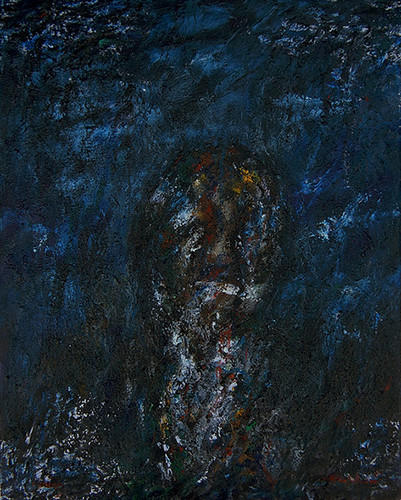From the 1940s until his passing in 2008, Rauschenberg worked with everything from photography to items scavenged from New York City streets to vats of bubbling mud. More than 150 of Rauschenberg’s artworks, including prints, sculptures, paintings, and Combines (works that incorporate painting and sculpture), will be on view in the retrospective Robert Rauschenberg: Erasing the Rules, celebrating the artist’s continual experimentation with materials and collaborative working processes. The exhibition demonstrates how, with razor-sharp humor and intelligence, Rauschenberg broke down boundaries between disciplines, anticipated many of the defining cultural and social issues of our time, and redefined what art could be for the generations of artists who followed.The exhibition was largely organized in chronological order, thus gave the viewers a clear sense of the evolution of the artist, and also certain trends of the art world.
First group mostly consisted of chromatic graphic works from the 1950s and they were quite fascinating.
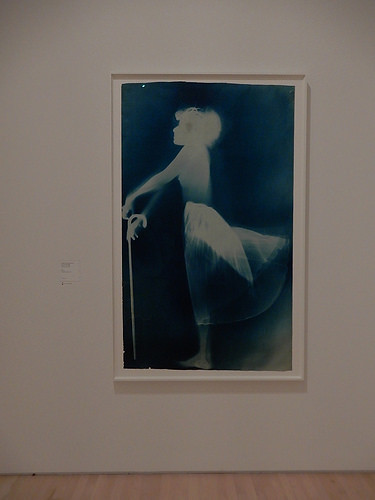
Sue, c 1950, Robert Rauschenberg & Susan Weil
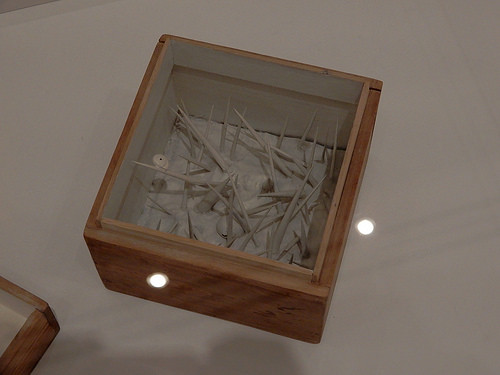
Untitles (Scatole personali), c 1952
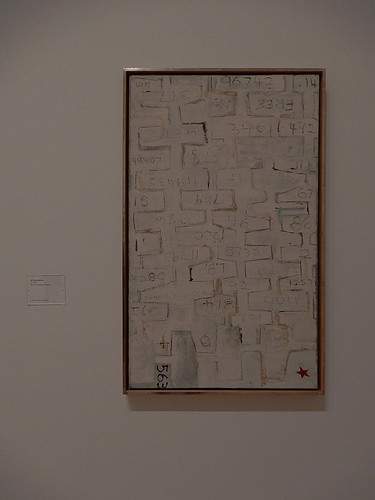
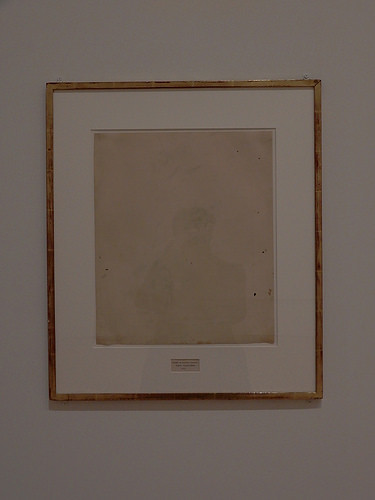
22 The Lily White, 1951 & Erased de Kooning Drawing, 1953
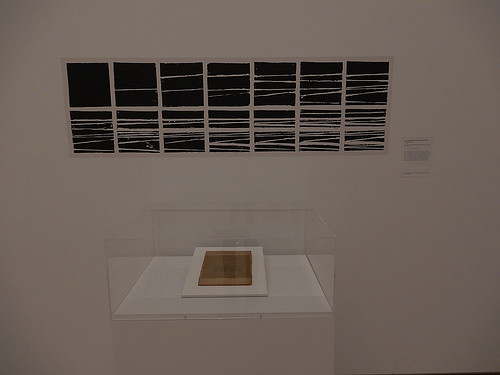
A Print Designed to exist in passing time, Rauschenberg, 1948
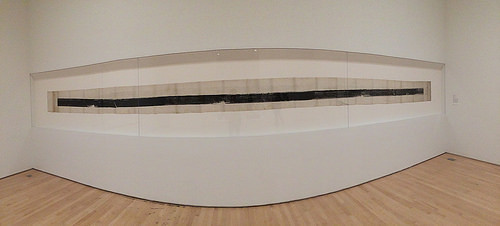
Automobile Tire Print, 1953
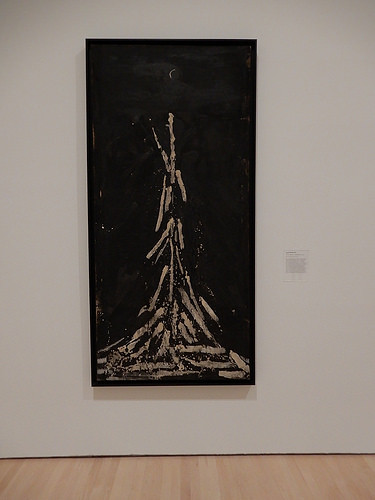
![DSCN0159 _ Untitled [black painting], Rauschenberg, 1952](https://farm5.staticflickr.com/4630/39676212004_63005d940b.jpg)
Untitled (Night Blooming), c 1951 & Untitled [black painting], 1952
Later on, his works obtained more colors and the third dimension, literally.
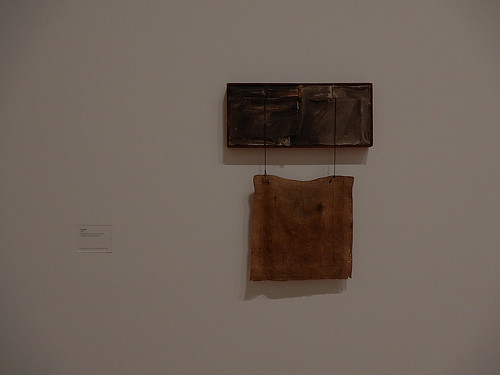
Untitled, 1958
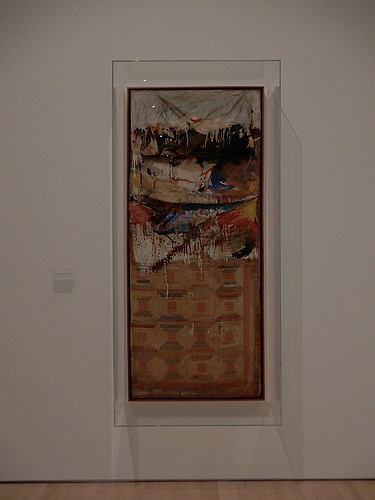
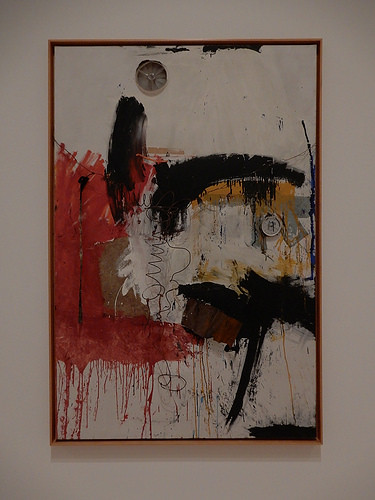
Bed, 1955 & First Time Painting, 1961
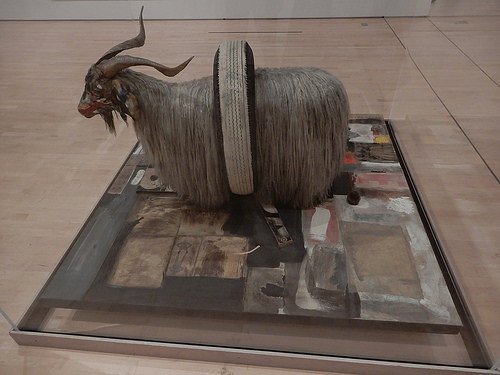
Monogram, 1955-59
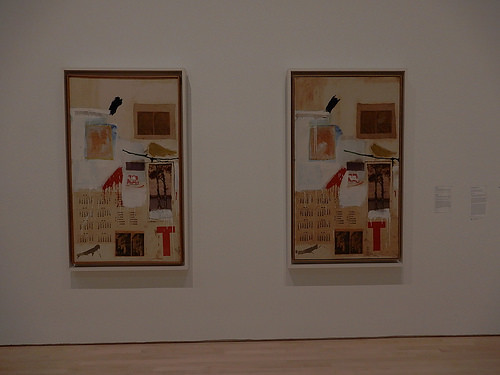
Factum I & Factum II, 1957 & 1957
One of his most ambitious and impactful accomplishment was a cycle of thirty-four illustrations for Inferno, with complex motifs and compositions, and appealingly understated palettes. These illustrations were as profound as they were beautiful.
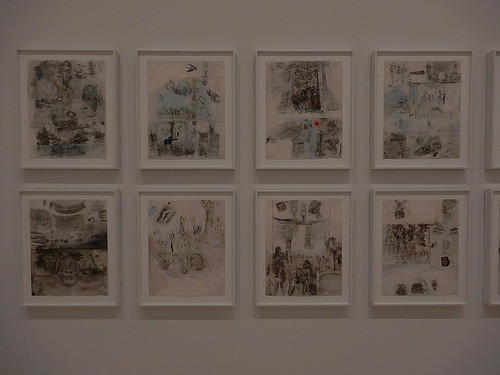
Thirty-Four Illustrations for Inferno (1-4, 18-21), 1958-60
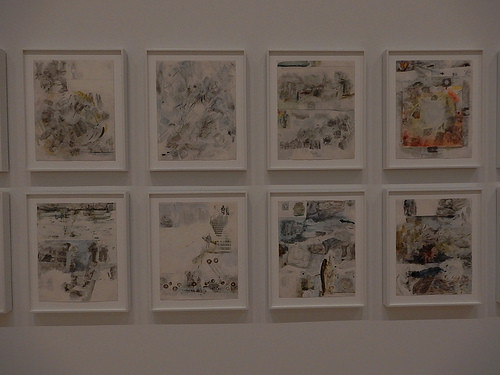
Thirty-Four Illustrations for Inferno (5-8, 22-25), 1958-60

Thirty-Four Illustrations for Inferno (9-12, 26-29), 1958-60
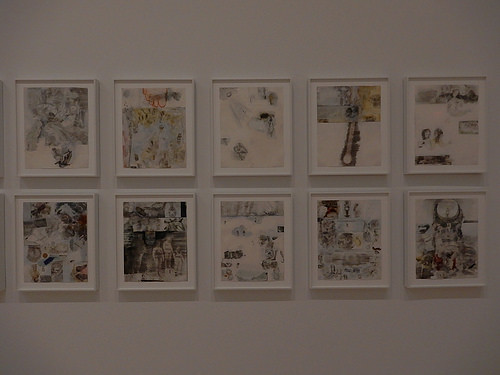
Thirty-Four Illustrations for Inferno (13-17, 30-34), 1958-60
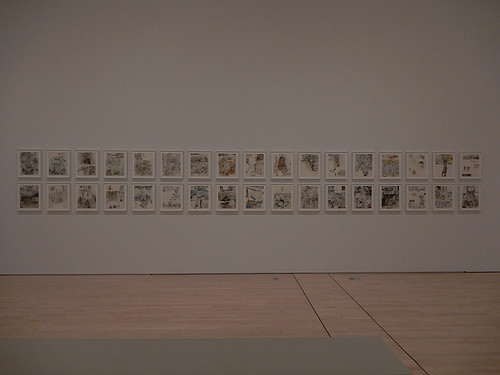
Thirty-Four Illustrations for Inferno, 1958-60
Moving to the 1970s, Rauschenberg produced more works in three dimensions, and sometimes with additional mechanical motions and even sound, a fourth dimension.
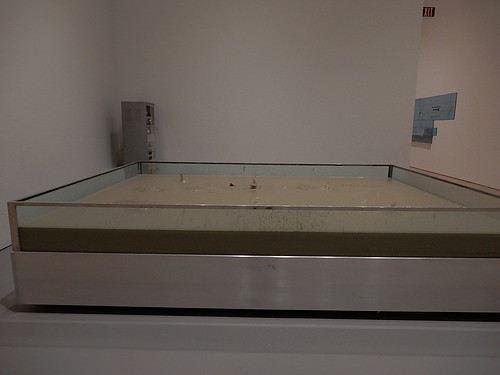
Mud Muse, 1968-71
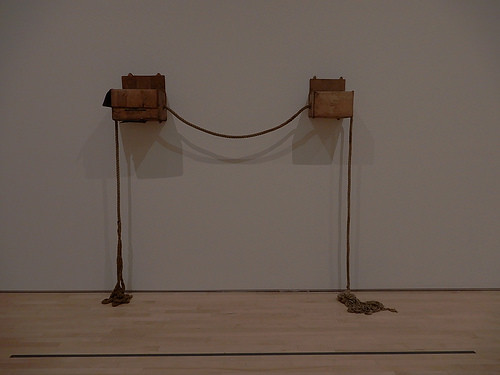
Untitled (Venetian), 1973
Some were startlingly delicate, such as the Glacier and Jetty (Hoarfrost), and some robust and foreboding, such as Sor Aqua (Venetia).
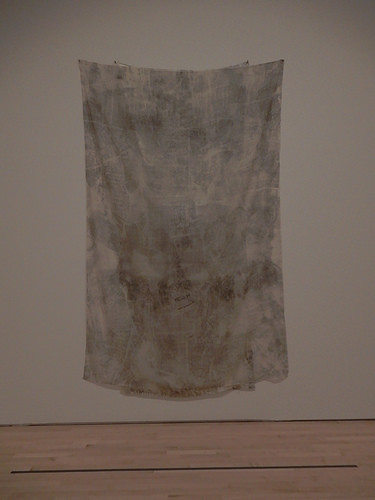
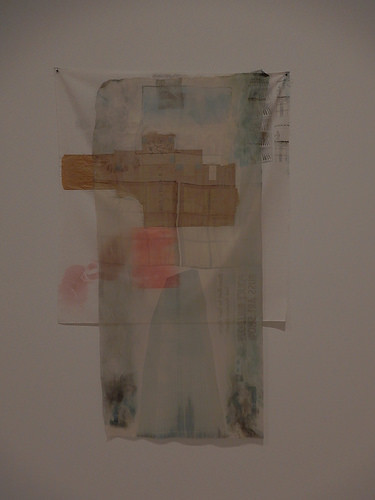
Glacier (Hoarfrost), 1974 & Jetty (Hoarfrost), 1974
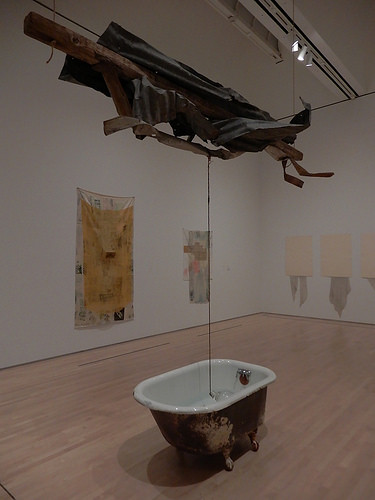
Sor Aqua (Venetia), 1973
Another highlight was his 1978 Hiccups, a group of paintings/prints on paper and zipped together into a long band, in no specified order. They were intriguing, beautiful, and deeply touching, for reasons hard to pin down.
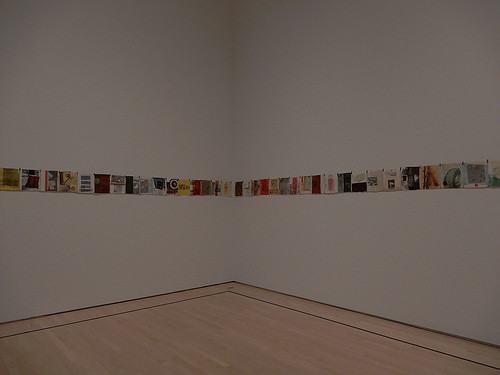
Hiccups (partial), 1978
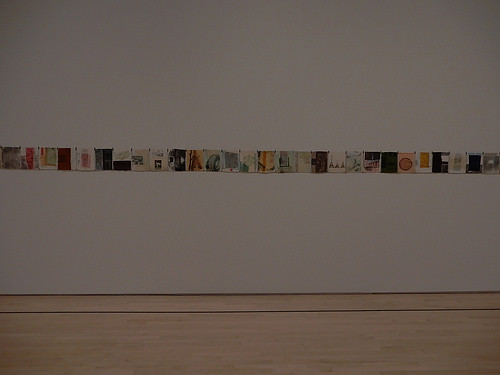
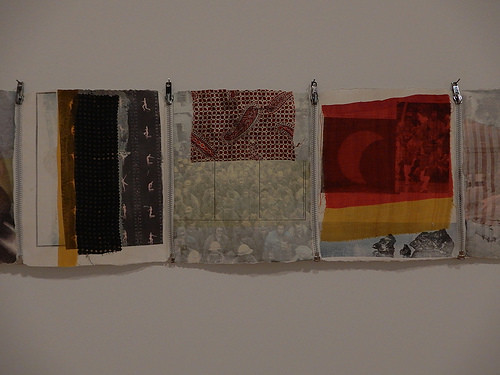
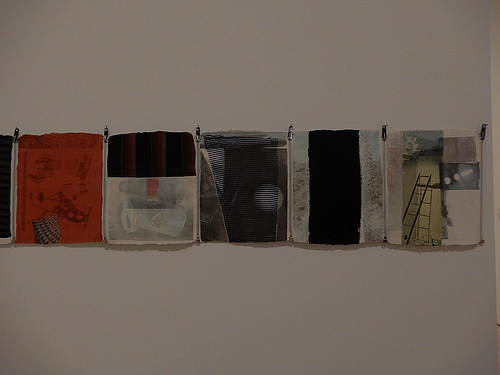

Hiccups, 1978
I also like several pieces from late, such as the 1991 Holiday Ruse (Night Shade), when he was in his mid-seventies.
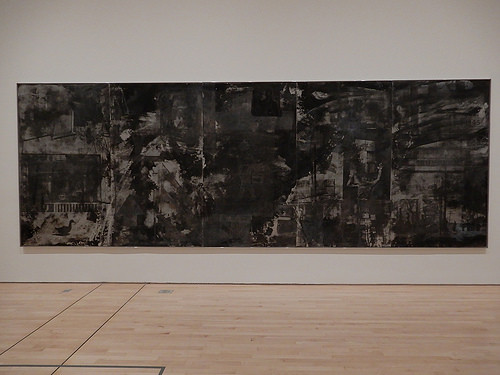
Holiday Ruse (Night Shade), 1991

Catastrophe (Arcadian Retreat), 1996
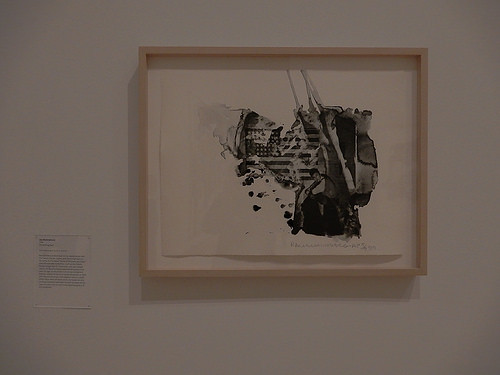
Jap, 1999

Eagle Eye (Ruminations), 1999
Great encounter with this amazing artist.
Other Related posts on Art · 文化 · Kunst:
- Edvard Munch at San Francisco Museum of Modern Art
- Introduction to Fisher Collection and the 75th Anniversary Exhibit at SFMOMA
- "The Political Line" - Keith Haring Exhibition at De Young Museum
- Tomás Saraceno at SFMOMA
- Preview of the Newly Expanded SFMOMA
- Unauthorized SFMOMA Solo Show
- More Sculptures at Cantor Arts Center, Stanford University

